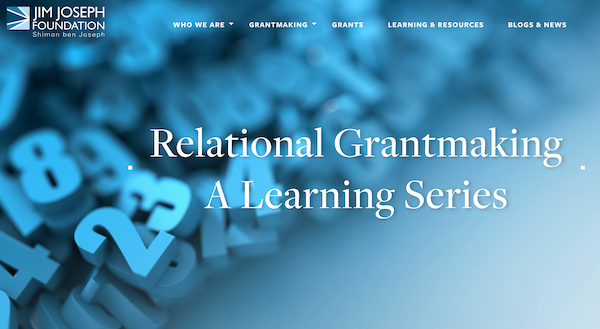Wacky Ideas for Funders
We just came back from PEAK 2019, a conference of primarily grants managers intentionally discussing how making small shifts to the way we show up to our work can help us advance our goals. Our conversations were filled with ideas about shifts in practice that can help us feel good, do our jobs better, and be more responsive to the communities we work with. These ideas are not that wacky, but they are a stretch from the way many of us traditionally do work:
- Compensate grantees for their time on applications. Often without realizing it, we ask people for their time or ideas free of charge—and often grantees are only compensated by the potential that they may get a grant. Pause and think about how we value and compensate nonprofit workers for their time, and what we are offering to the communities we’re engaged with from the start of our relationships. Offering a planning grant, the opportunity for mentorship, or other resources can go a long way.
- Hire people from the community. If you are working in a specific area, or have programmatic focuses, look for hires who have on-the-ground experience in the area you're working in. Having foundation staff with nonprofit experience and/or deep knowledge about the community and issues you are trying to impact can bring beneficial insights to how they communicate with grantees, establish trust, and develop solutions.
- Wear jeans every day. You don’t actually have to wear jeans every day—wear what makes you comfortable! The point is to consider how your appearance, combined with the position of power you may sit in, is perceived by the communities you work with. Depending on the context, putting on a pair of jeans instead of slacks may help you seem more approachable to grantees who are likely already stressing about how to impress you. And in general, let’s encourage each other to bring a touch of our personal styles to the workplace and engage with each other authentically!
- Share and shift decision-making power. Commit to transform power in relationships between those with resources and those without. Invite grantseekers to be actively involved in decisions about their own realities, whether through inviting non-grantmakers to help set priorities, develop strategies, sit on foundations’ boards or advisory committees, conduct research, or decide where funding should go. It can be nerve-wracking, but you will be more alert towards the needs of the communities you are seeking to impact!
- Support better data collection practices. There are so many gaps in our knowledge about the communities we serve because of gaps in data collection. While this impacts how we operate as funders, (check out United Philanthropy Forum’s page on why the 2020 census matters to philanthropy) it has many implications for how grantees broadly receive support and can effectively respond to community needs. Ask your grantees how you can support them in collecting the data they need and gather and share data that you collect with your peers!
Not so wacky right? We hope at least one of these ideas seem adoptable—you’ve probably even already considered a few and we encourage you to reflect and commit to one small change to how you approach work. What ties these practices together is that they are all driven by a need for more transparent practices and greater accountability to the communities we work with. In an ever-changing world, it’s worth taking risks and making small shifts like these to help us all work toward equity and impact.
Warmly,
Jen and Sarina — The GrantCraft Team
This letter originally appeared in GrantCraft's newsletter. To stay updated with our newsletter and special alerts, sign up here.



